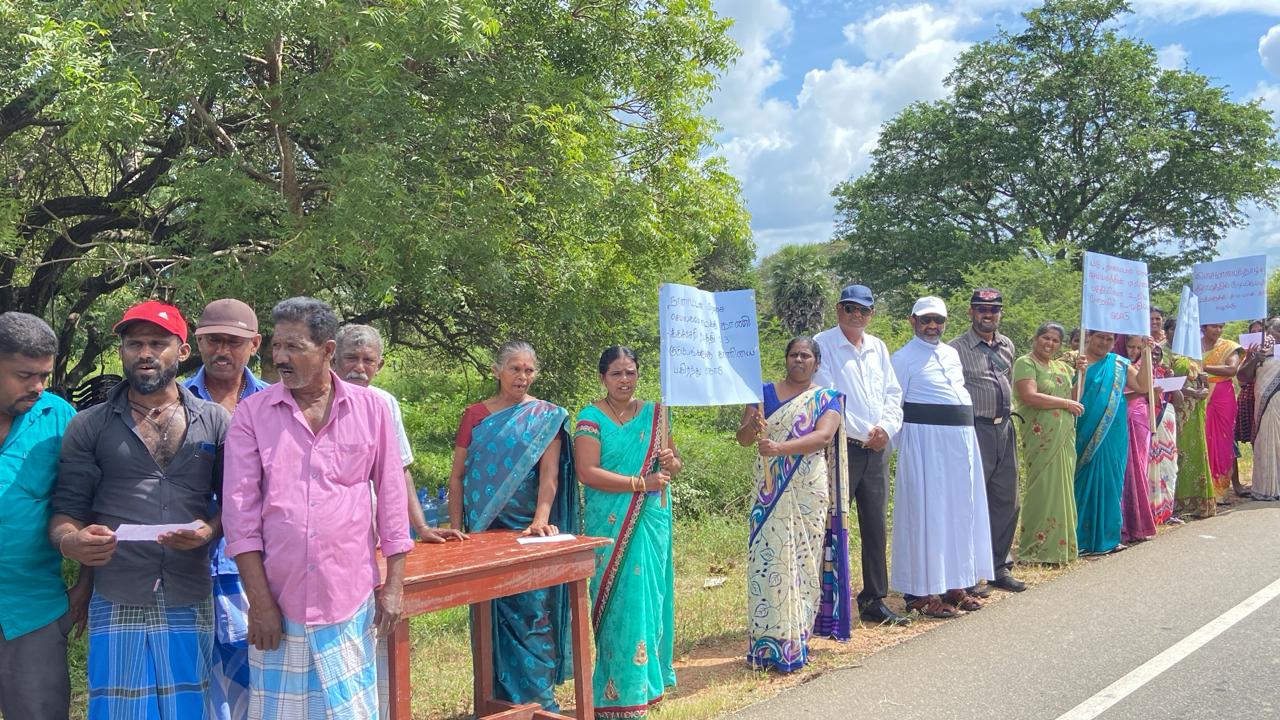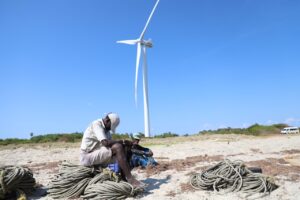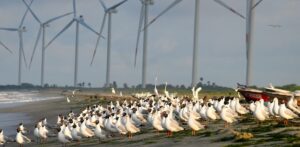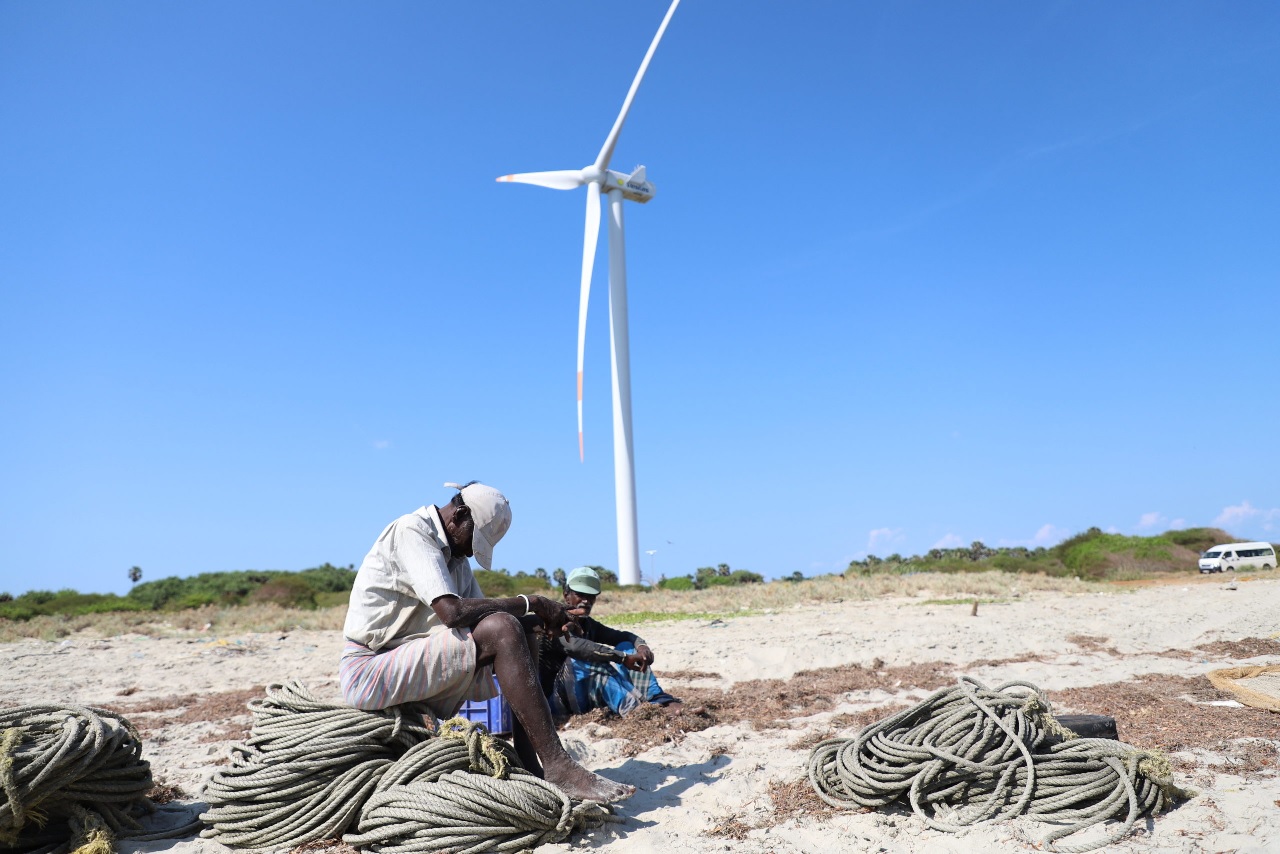The Battle for Mannar’s Future: Wind Farms, Floods, and Environmental Crisis
Residents fear that the largest wind power project in South Asia, backed by the Ceylon Electricity Board and India’s Adani Group(which has pulled out ) , is pushing Mannar Island toward disaster. With livelihoods ruined, the environment destabilized, and local communities losing their homes, this is a fight for survival.

Mannar Island holds immense ecological and cultural significance. As the largest island in Sri Lanka, it serves as a crucial stop on the Central Asian Flyway, providing a vital resting and breeding ground for thousands of migratory birds from over 30 countries. Its unique wetlands and diverse wildlife make it an environmental treasure. Additionally, Mannar’s rich cultural heritage and historical importance, with a population blending Sinhalese and Tamils, add to its value. The island’s agricultural and fishing communities also rely on its resources for their livelihoods, making its protection essential for both nature and the local people.
Mannar’s Hopeful Beginning Turns Into a Struggle for Survival
For generations, Mannar Island has been a sanctuary for migratory birds. A critical stop along the Central Asian Flyway, it has offered a safe haven for thousands of birds during their long migrations. However, this unique environmental treasure is now under threat, not from nature, but from a wind power project that was supposed to bring clean energy but instead has brought devastation.
A Damaging Wind: The Struggles Begin
Mannar Island has become home to South Asia’s largest wind farm, constructed by the Ceylon Electricity Board (CEB) in partnership with India’s Adani Group. While the project was initially hailed as a step toward sustainable energy, its impact on the island’s delicate balance has been disastrous. The winds of change have brought severe flooding, damaging homes and agricultural lands, and endangering wildlife habitats.
Local residents, primarily fishermen and farmers, have watched helplessly as roads and wind turbine foundations block the natural water flow, causing floods that last months at a time. This interruption of the natural ecosystem has not only made daily life difficult but also disrupted the island’s agricultural economy.
The Community’s Dismay: Voices of Mannar’s Struggling Citizens

Frustration runs deep among Mannar’s 70,000 residents. They had fought against the construction of the wind turbines from the outset, but the scale of the damage they now face was beyond their imagination.
Fr. S. Marcus, President of the Mannar Citizens’ Committee (MCC), expressed the community’s distress: “Flooding has become unbearable. The land is submerged for months, making it impossible to farm or fish. People are suffering from waterborne diseases, and many families cannot afford clean water. Some are even forced to flee their homes.”
Mannar’s population is now faced with a harsh reality. The floods have not only destroyed crops but also polluted the groundwater, leaving families with no choice but to buy bottled water, draining their limited resources.
Environmental Crisis: A Future in Peril
The wind power project is not the only environmental challenge facing Mannar. Mining projects, such as the extraction of limonite, have compounded the environmental damage. Together with the wind farms, these activities threaten the island’s fragile ecosystem. Local leaders warn that if the current trajectory continues, Mannar Island may soon become uninhabitable.
M.Lakshi Kurushanthan, President of the Mannar Women’s Development Federation, highlighted the additional concerns: “We have already seen the destruction of palmyra trees, which our community relies on for livelihood. If all planned wind power plants and mining projects go ahead, there may not be enough land for us to live on.”
A Call for Action: No More Wind Farms in Mannar
As the people of Mannar continue to face these challenges, they are determined to make their voices heard. Despite sending numerous letters to government officials and even directly to the President, the community’s calls for action have largely been ignored. In response, local leaders have vowed to fight any future wind power projects in Mannar, urging the government to relocate these projects to less vulnerable areas.
“We are not against clean energy,” said Fr. Marcus. “But the location of this project is wrong. The island’s fragile ecosystem cannot support such large-scale industrial activity without suffering severe consequences.”
The community is rallying behind a movement to halt further developments, hoping that their protests will bring the attention needed to protect their homes and the environment.

Adani Group Withdraws: What’s Next for Mannar?
In a twist, the Adani Group recently announced that it would withdraw from the 484 MW wind power project in Mannar. In a statement, the company expressed its respect for Sri Lanka’s sovereign rights but left the door open for future collaborations. While this offers a glimmer of hope, the battle is far from over, as the wind turbines and other projects continue to wreak havoc on the island.
The community’s fight is not just about environmental preservation; it’s about safeguarding their homes, culture, and way of life. Local leaders are now pushing to bring their case to President Anura Kumara Dissanayake, asking for urgent intervention and a shift in plans to protect Mannar’s future.
A Divided Land, A Divided Future
Mannar’s ongoing struggle is about more than just the immediate impacts of development; it’s about the long-term survival of a people and a place. The island, once a peaceful community blending Sinhalese and Tamil populations, now faces the bitter divisions created by these destructive projects.
While the Sri Lankan government insists on the need for scientific evidence to justify action, the people of Mannar are calling for change. With the island’s very existenceSet featured image at risk, they are determined to make sure their voices are heard and their land is protected.
A Fight for Survival: The Way Forward
The future of Mannar rests in the balance. The island’s residents face an uphill battle, but their resolve to protect their homes, their livelihoods, and the environment is unwavering. Whether their voices will be heard remains to be seen, but one thing is clear: the fight for Mannar’s future has only just begun.







